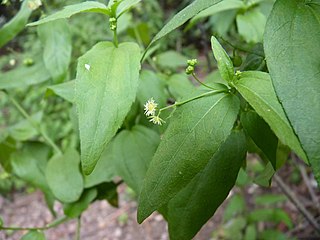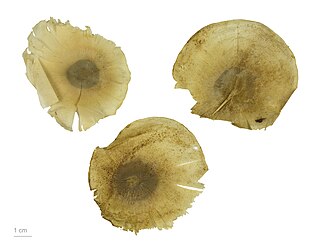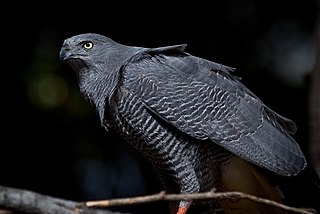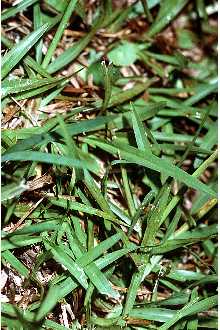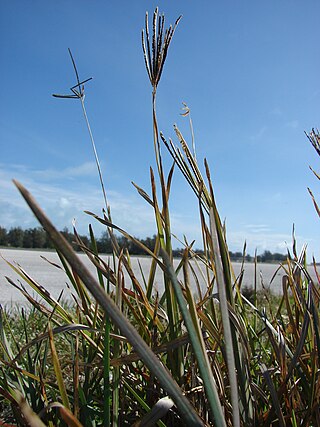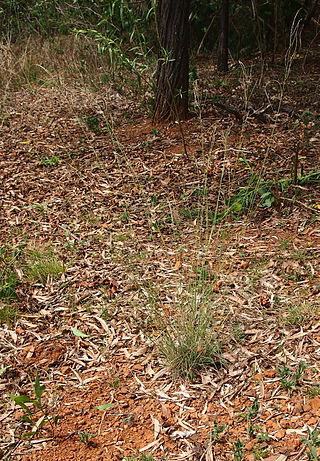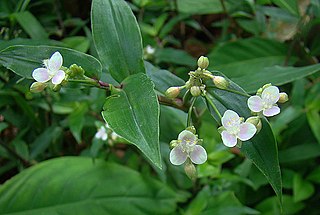| Pappophorum | |
|---|---|
 | |
| Pappophorum bicolor [1] | |
| Scientific classification | |
| Kingdom: | Plantae |
| Clade: | Tracheophytes |
| Clade: | Angiosperms |
| Clade: | Monocots |
| Clade: | Commelinids |
| Order: | Poales |
| Family: | Poaceae |
| Subfamily: | Chloridoideae |
| Tribe: | Cynodonteae |
| Subtribe: | Pappophorinae |
| Genus: | Pappophorum Schreb. [2] |
| Type species | |
| Pappophorum alopecuroideum (syn of P. pappiferum) [3] Vahl. [4] | |
| Synonyms [3] | |
| |
Pappophorum is a genus of plants in the grass family, native to the Western Hemisphere. [5] [4] Members of the genus are commonly known as pappusgrass. [6] [7]
- Species [3] [8] [9]
- Pappophorum bicolor E.Fourn.– pink pappusgrass - Texas, Chihuahua, Coahuila, Durango, Guanajuato, D.F., Veracruz, Nuevo León, Tamaulipas, San Luis Potosí
- Pappophorum caespitosum R.E.Fr. - Bolivia, Argentina, Paraguay
- Pappophorum hassleri Hack. - Paraguay
- Pappophorum krapovickasii Roseng. - Bolivia, Argentina, Paraguay, Brazil
- Pappophorum mucronulatum Nees - Arizona, New Mexico, Texas, Mexico, Honduras, Colombia, Venezuela, Peru, Brazil, Argentina, Paraguay, Uruguay
- Pappophorum pappiferum (Lam.) Kuntze– limestone pappusgrass - Mexico, West Indies, South America
- Pappophorum philippianum Parodi - Brazil, Bolivia, Argentina, Uruguay, Chile, Sonora
- formerly included [3]
see Bouteloua Bromus Enneapogon Pentameris Triodia
- Pappophorum abyssinicum - Enneapogon cenchroides
- Pappophorum arabicum - Enneapogon desvauxii
- Pappophorum aucheri - Enneapogon persicus
- Pappophorum avenaceum - Enneapogon avenaceus
- Pappophorum benguellense - Enneapogon scaber
- Pappophorum boreale - Enneapogon desvauxii
- Pappophorum brachystachyum - Enneapogon desvauxii
- Pappophorum bulbosum - Enneapogon desvauxii
- Pappophorum caerulescens - Enneapogon caerulescens
- Pappophorum cenchroides - Enneapogon cenchroides
- Pappophorum commune - Enneapogon nigricans
- Pappophorum elegans - Enneapogon persicus
- Pappophorum eutrianoides - Bouteloua megapotamica
- Pappophorum fasciculatum - Enneapogon desvauxii
- Pappophorum figarianum - Enneapogon desvauxii
- Pappophorum filifolium - Enneapogon scoparius
- Pappophorum flavescens - Enneapogon nigricans
- Pappophorum foxii - Enneapogon foxii
- Pappophorum glandulosum - Pentameris pallida
- Pappophorum glumosum - Enneapogon persicus
- Pappophorum gracile - Enneapogon gracilis
- Pappophorum jaminianum - Enneapogon desvauxii
- Pappophorum laxum - Enneapogon scaber
- Pappophorum lindleyanum - Enneapogon lindleyanus
- Pappophorum megapotamicum - Bouteloua megapotamica
- Pappophorum mexicanum - Enneapogon desvauxii
- Pappophorum molle - Enneapogon cenchroides
- Pappophorum nanum - Enneapogon desvauxii
- Pappophorum nigricans - Enneapogon nigricans
- Pappophorum pallidum - Enneapogon pallidus
- Pappophorum persicum - Enneapogon persicus
- Pappophorum phleoides - Enneapogon desvauxii
- Pappophorum pumilio - Bromus pumilio
- Pappophorum pungens - Triodia bitextura
- Pappophorum purpurascens - Enneapogon purpurascens
- Pappophorum pusillum - Enneapogon desvauxii
- Pappophorum robustum - Enneapogon cenchroides
- Pappophorum scabrum - Enneapogon scaber
- Pappophorum schimperianum - Enneapogon persicus
- Pappophorum scoparium - Enneapogon scoparius
- Pappophorum senegalense - Enneapogon cenchroides
- Pappophorum setifolium - Enneapogon scoparius
- Pappophorum sinaicum - Bromus pumilio
- Pappophorum squarrosum - Bromus pumilio
- Pappophorum turcomanicum - Enneapogon persicus
- Pappophorum vincentianum - Enneapogon desvauxii
- Pappophorum virens - Enneapogon virens
- Pappophorum wrightii - Enneapogon desvauxii

